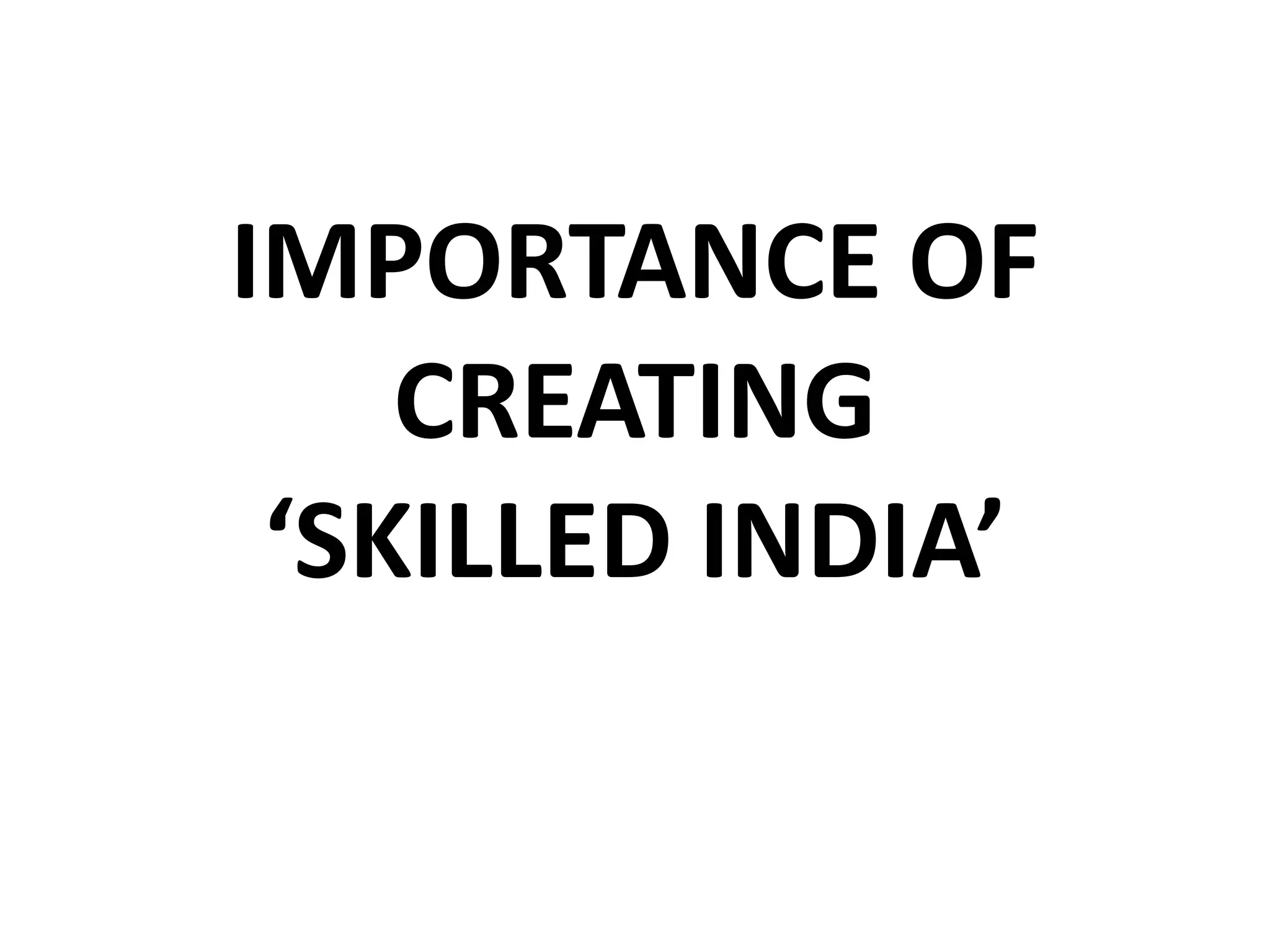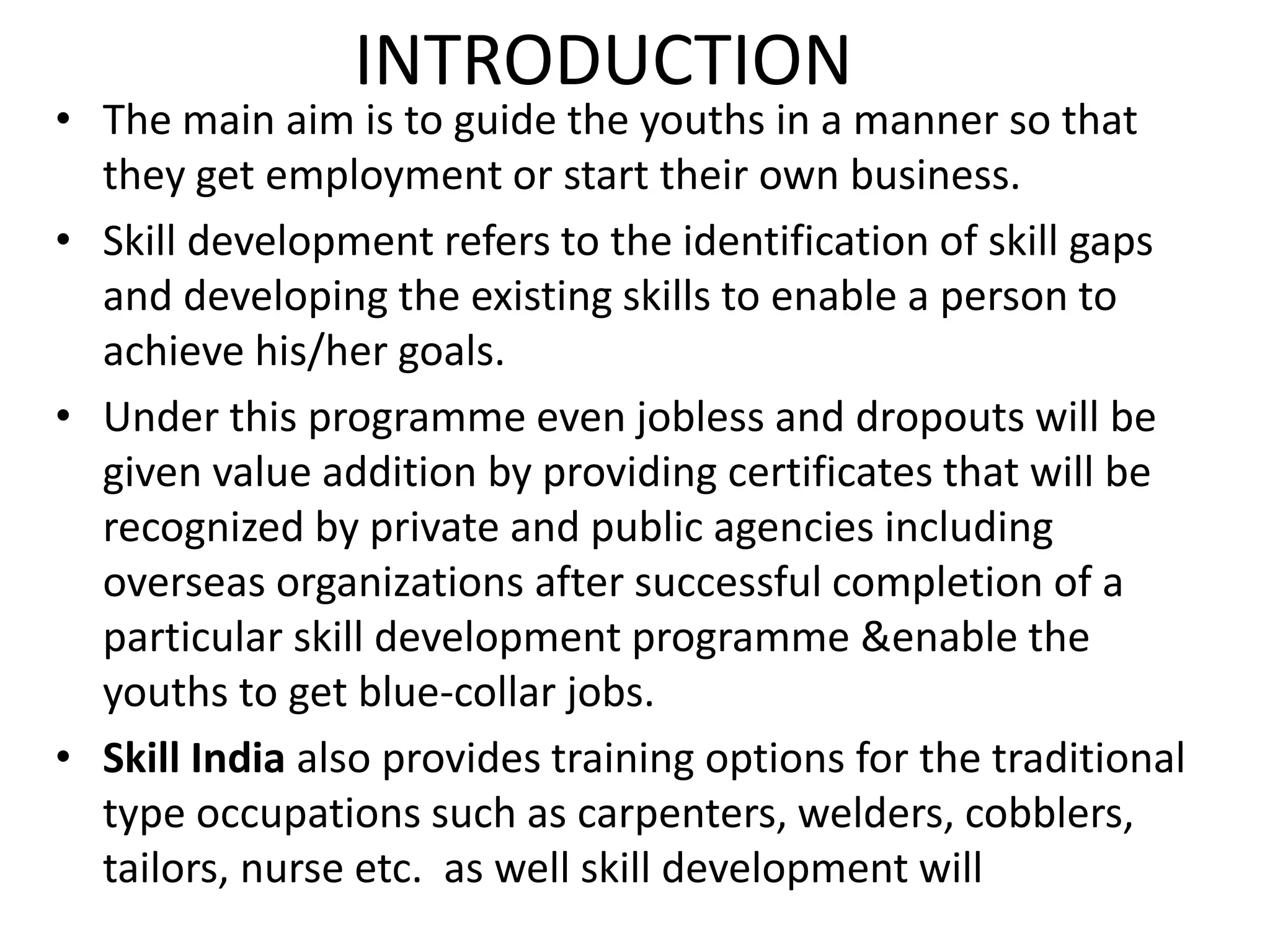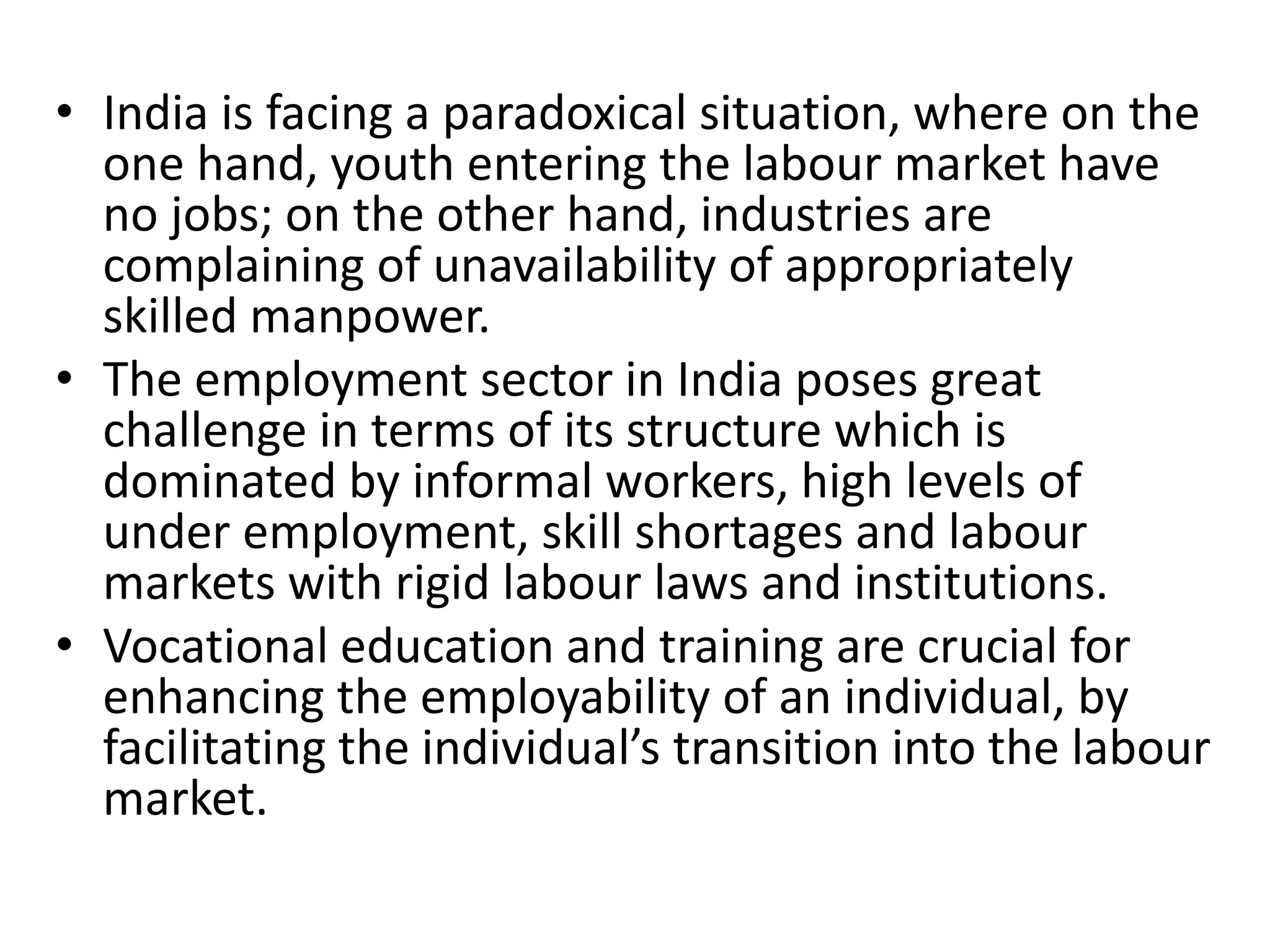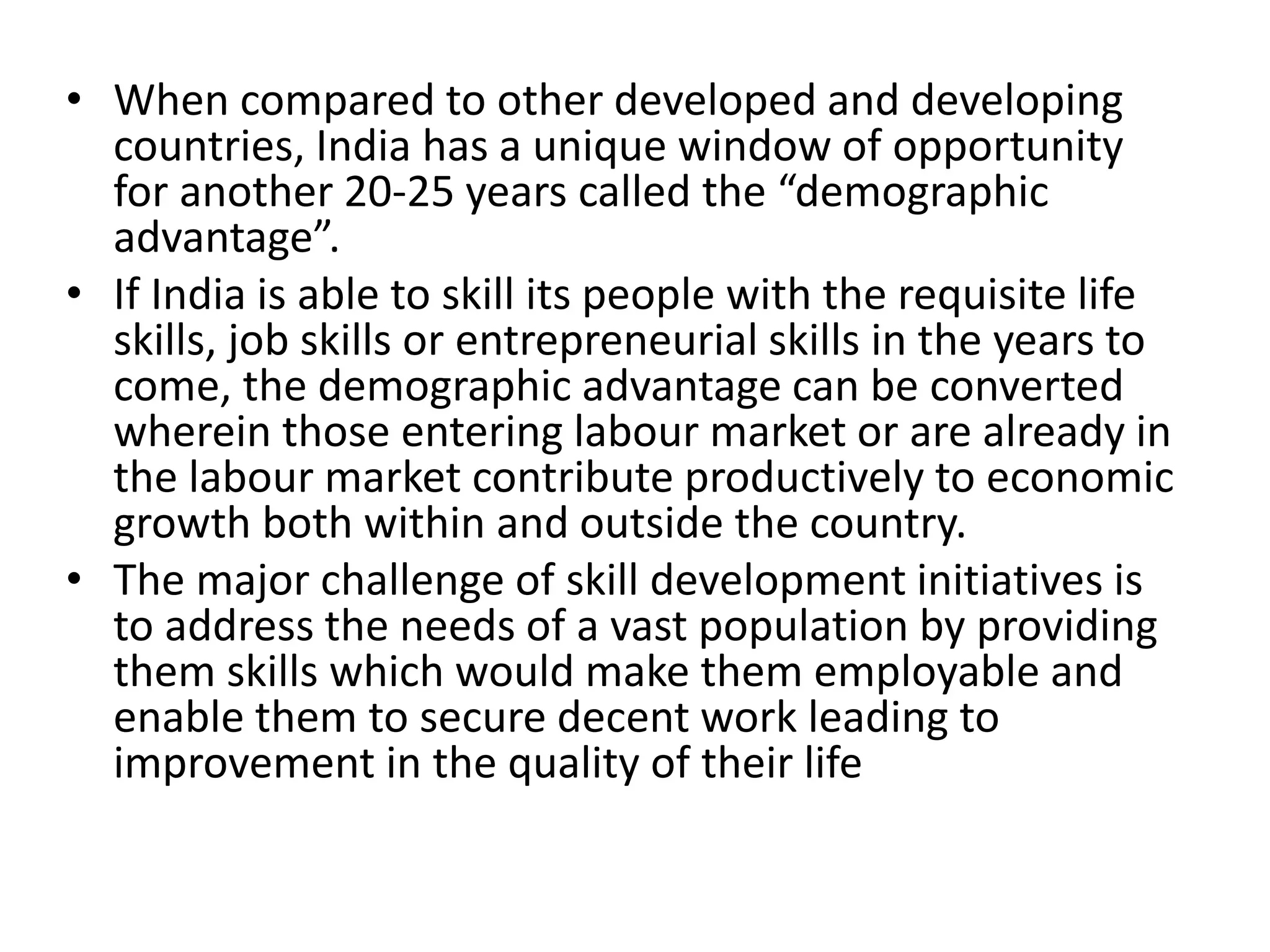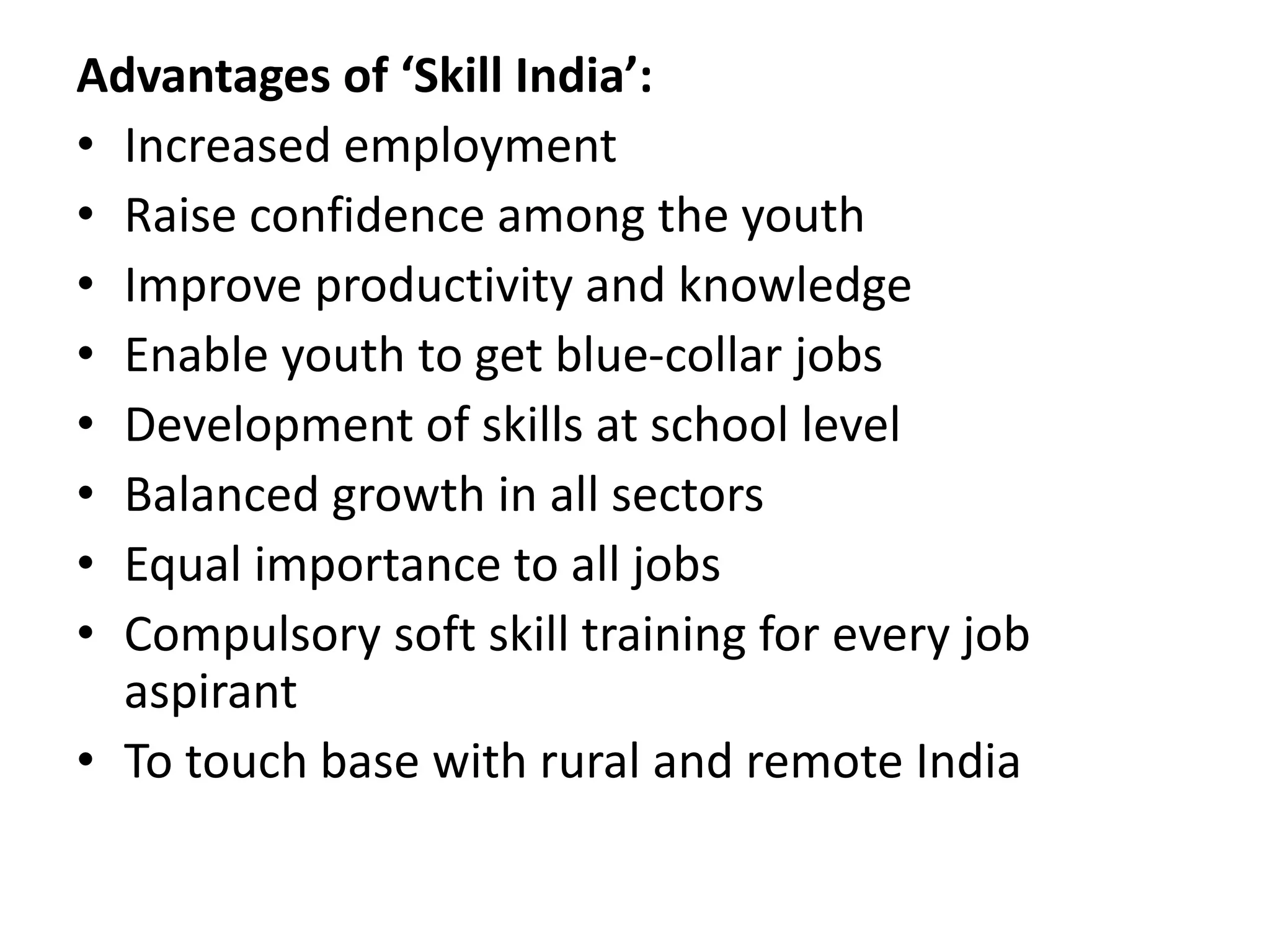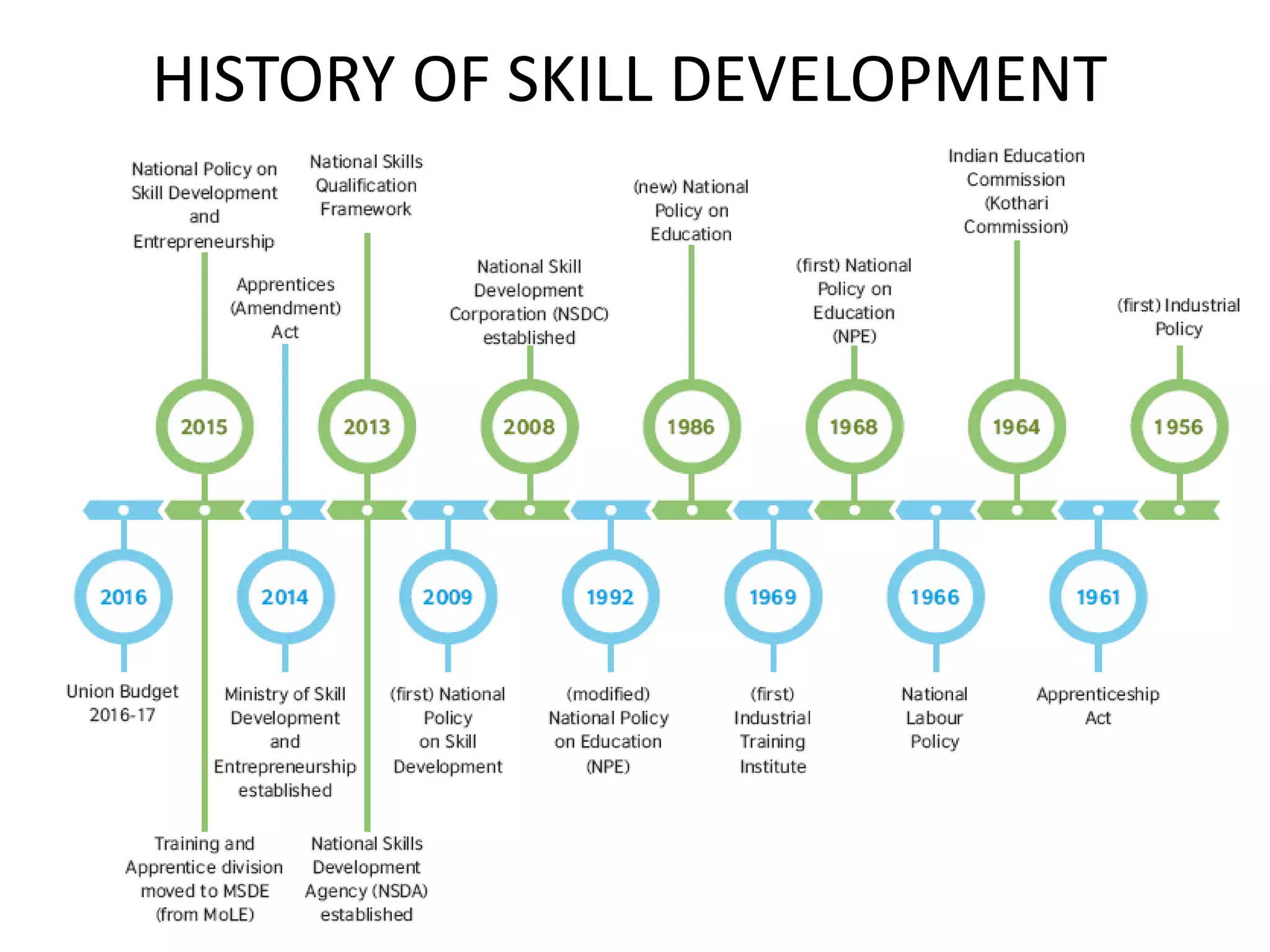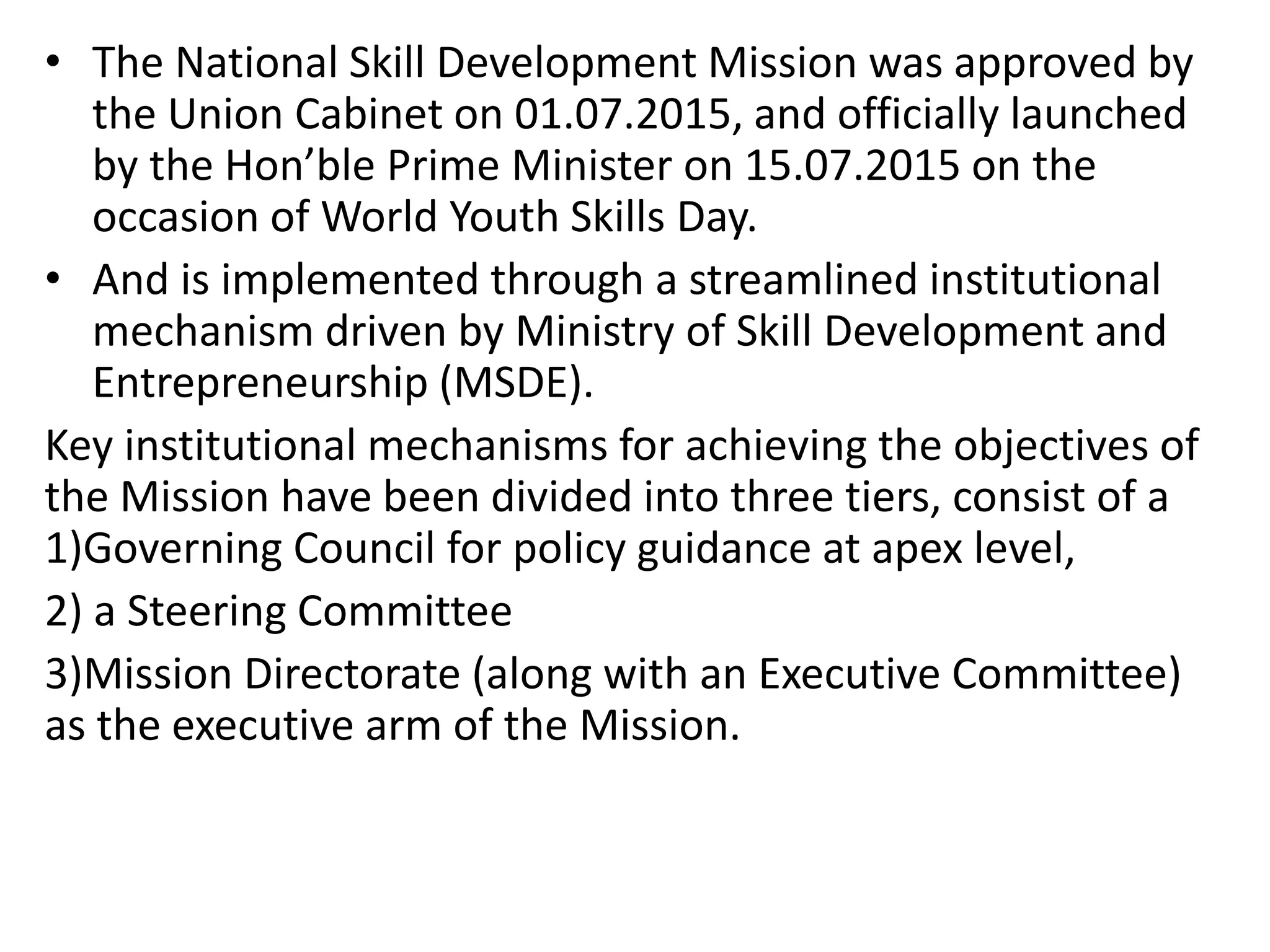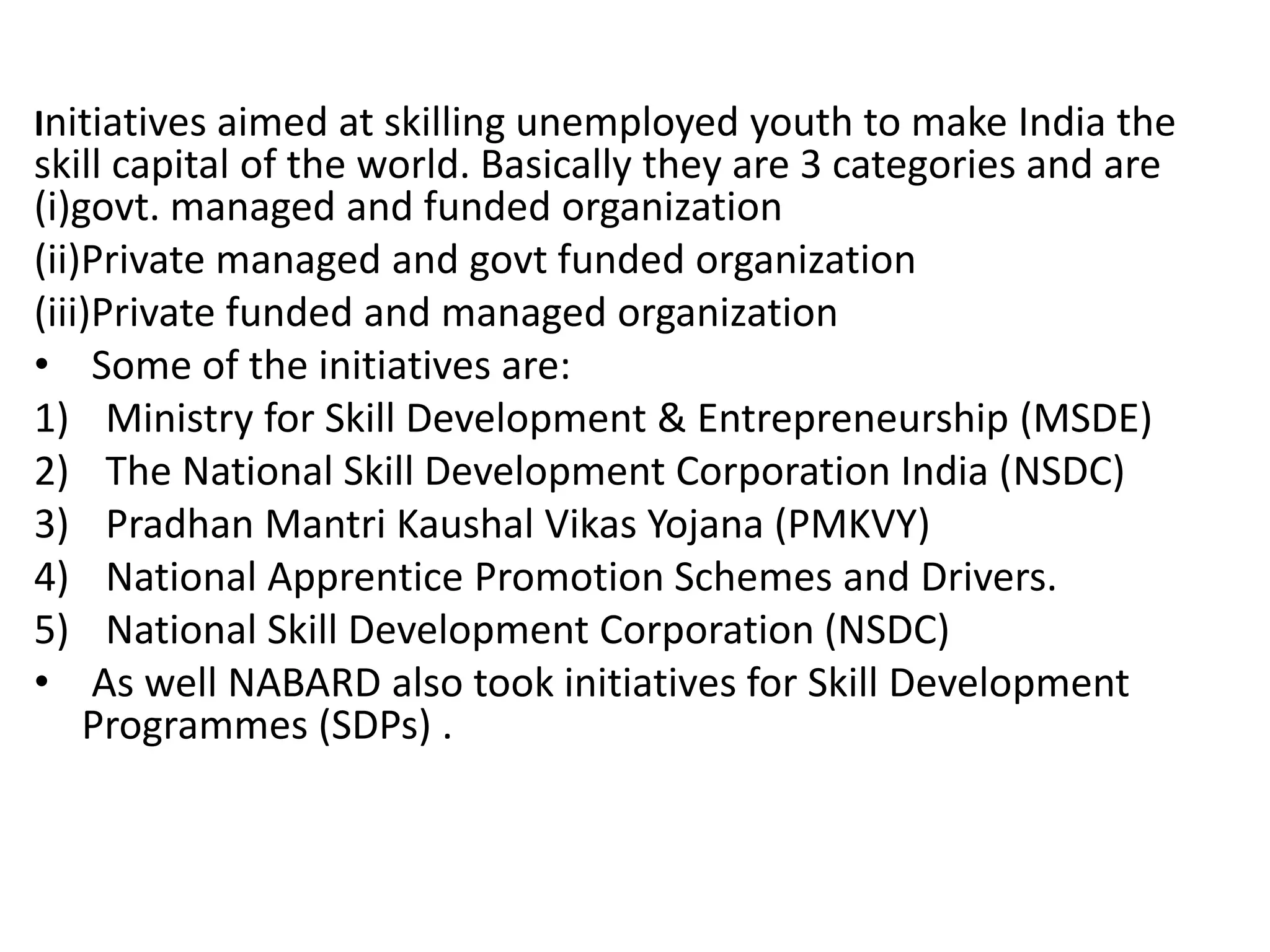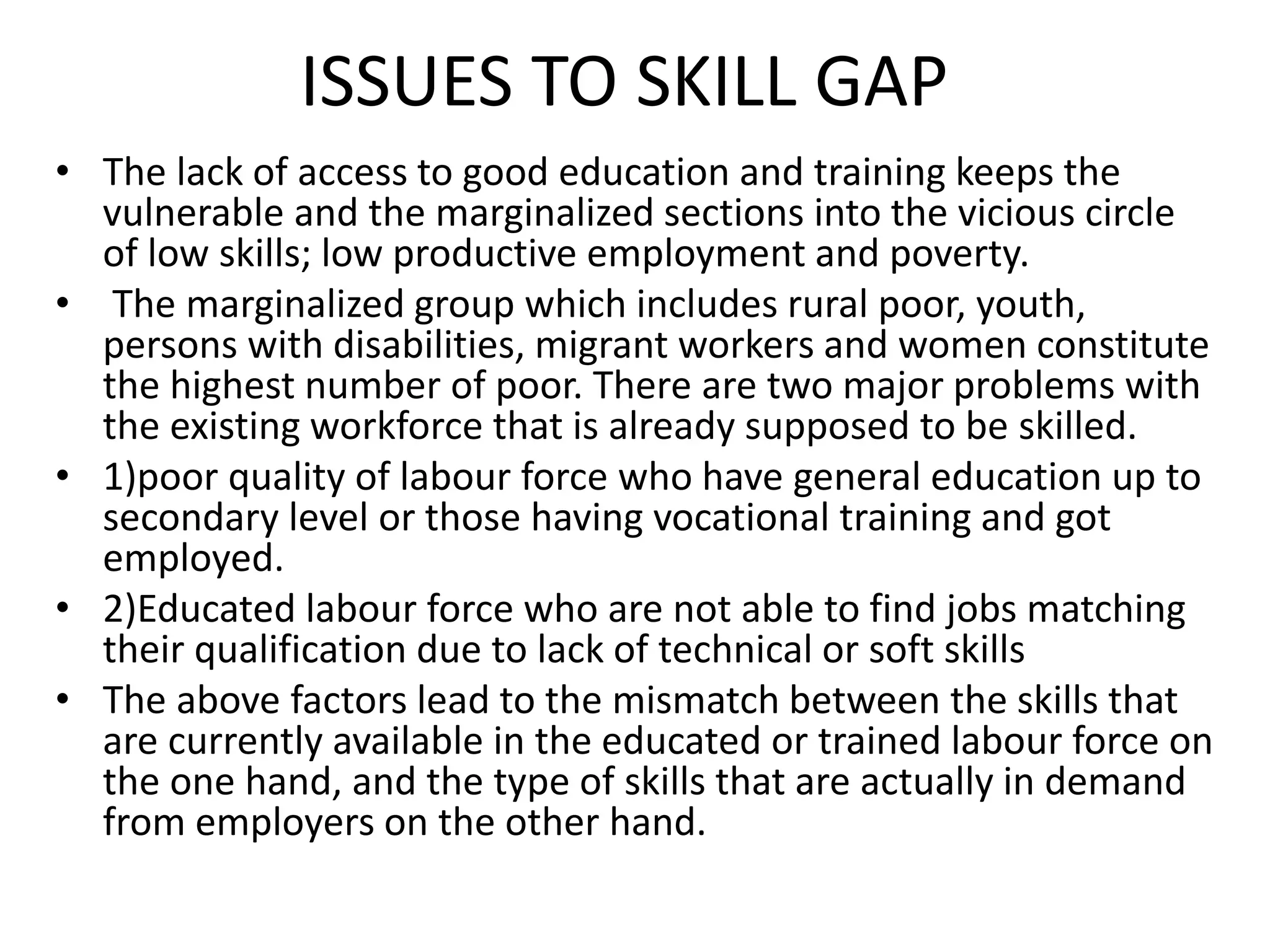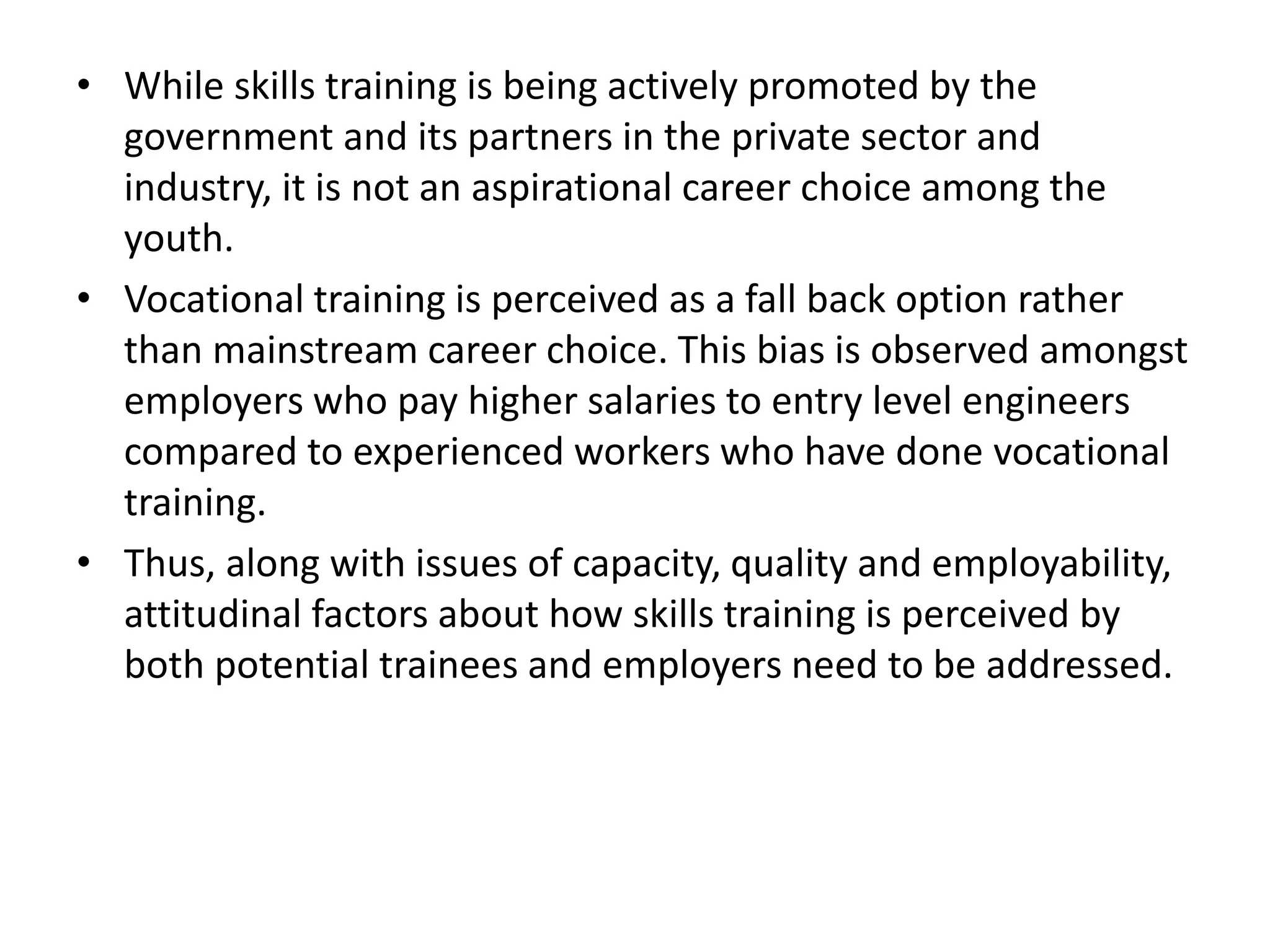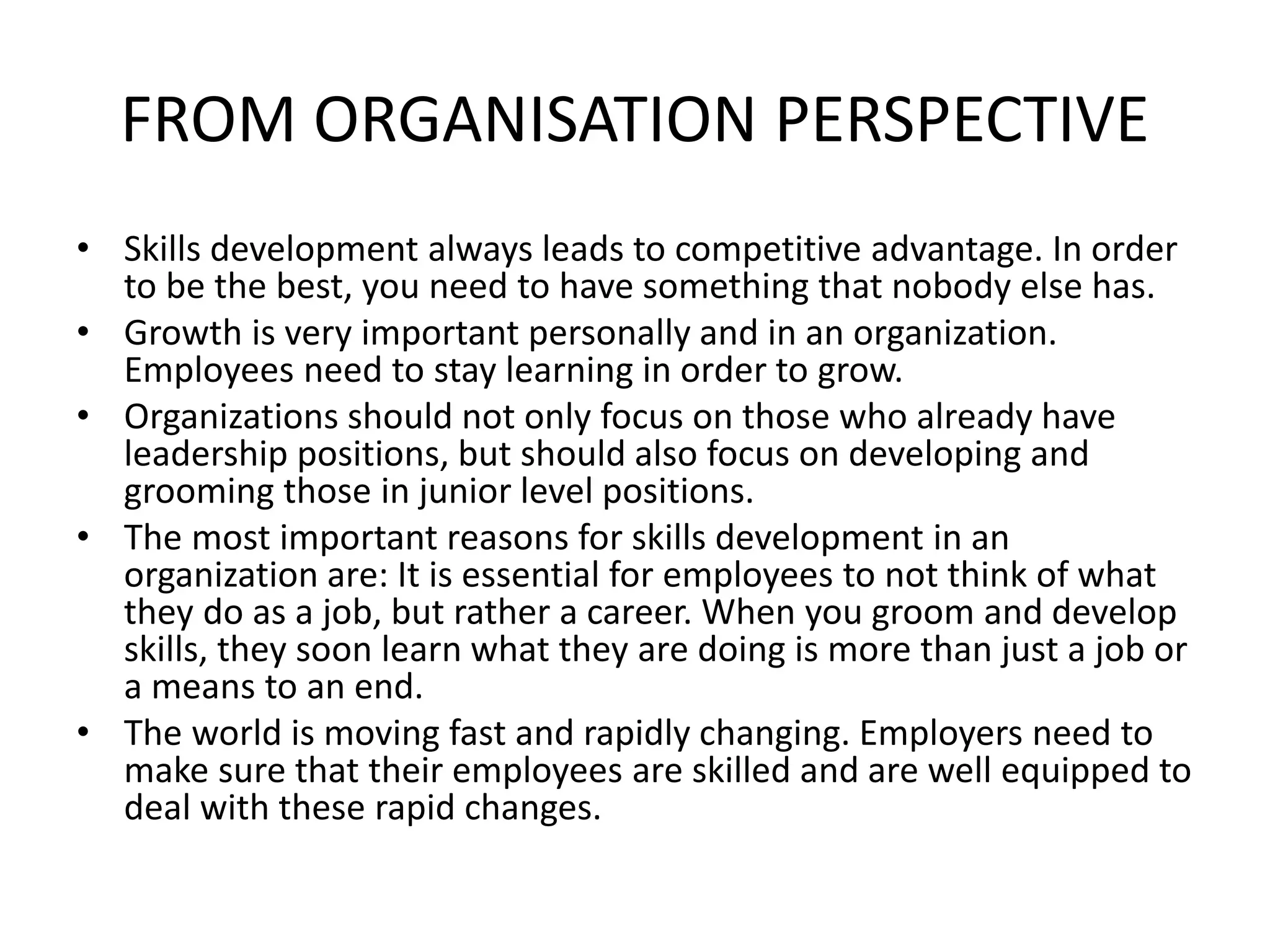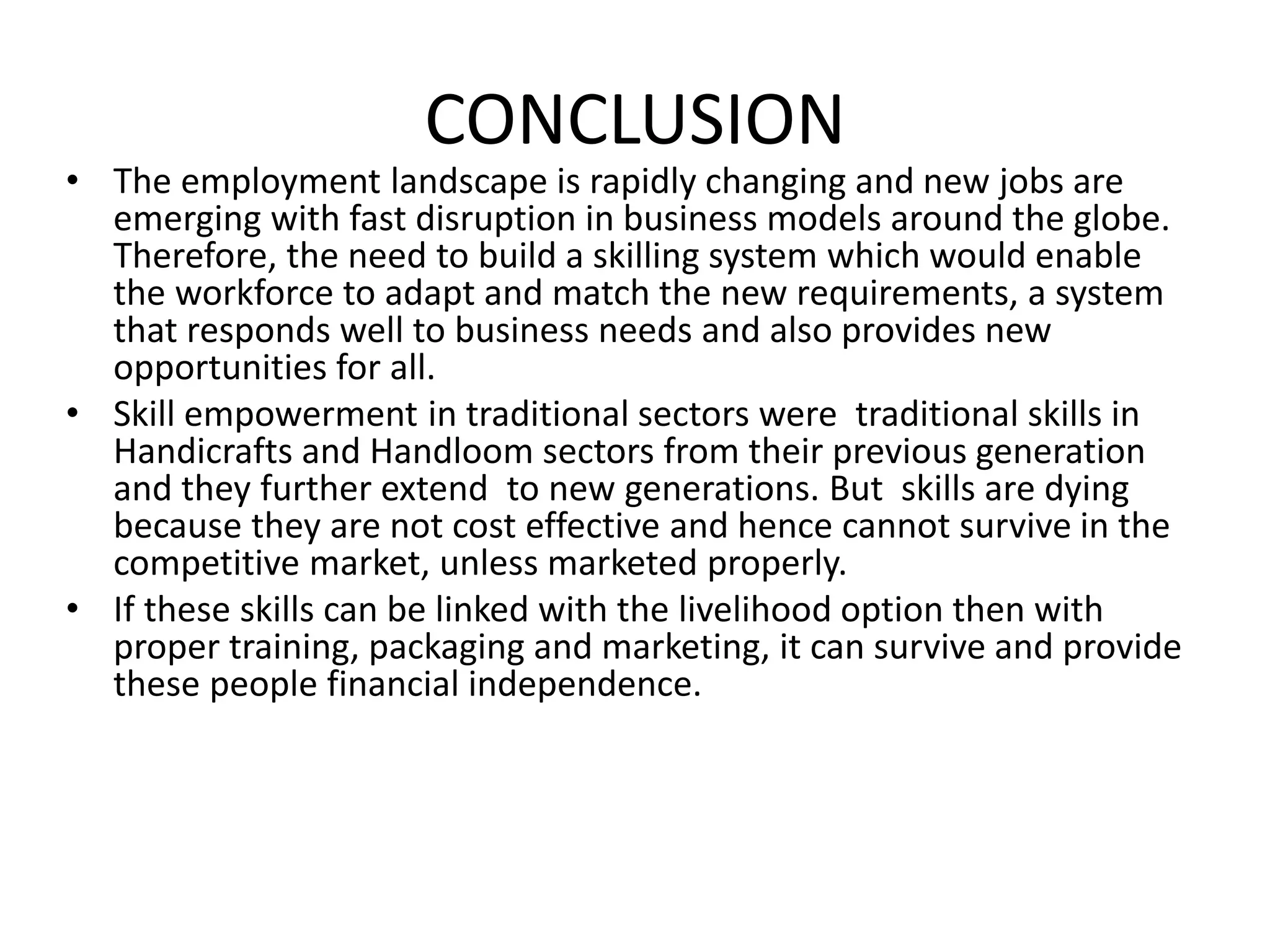The document discusses the importance of skill development in India. It notes that while India has a large youth population, there is a mismatch between the skills youth have and what employers require. The government has launched several initiatives to address this issue, including the National Skill Development Mission and programs led by the Ministry of Skill Development and Entrepreneurship. Skill development is crucial to improve employment opportunities and productivity in India by helping individuals transition into jobs or start businesses. However, challenges remain around the quality of training programs and negative perceptions of vocational education. Ongoing efforts are focused on reforming the skilling system to better meet business needs and create new opportunities.
